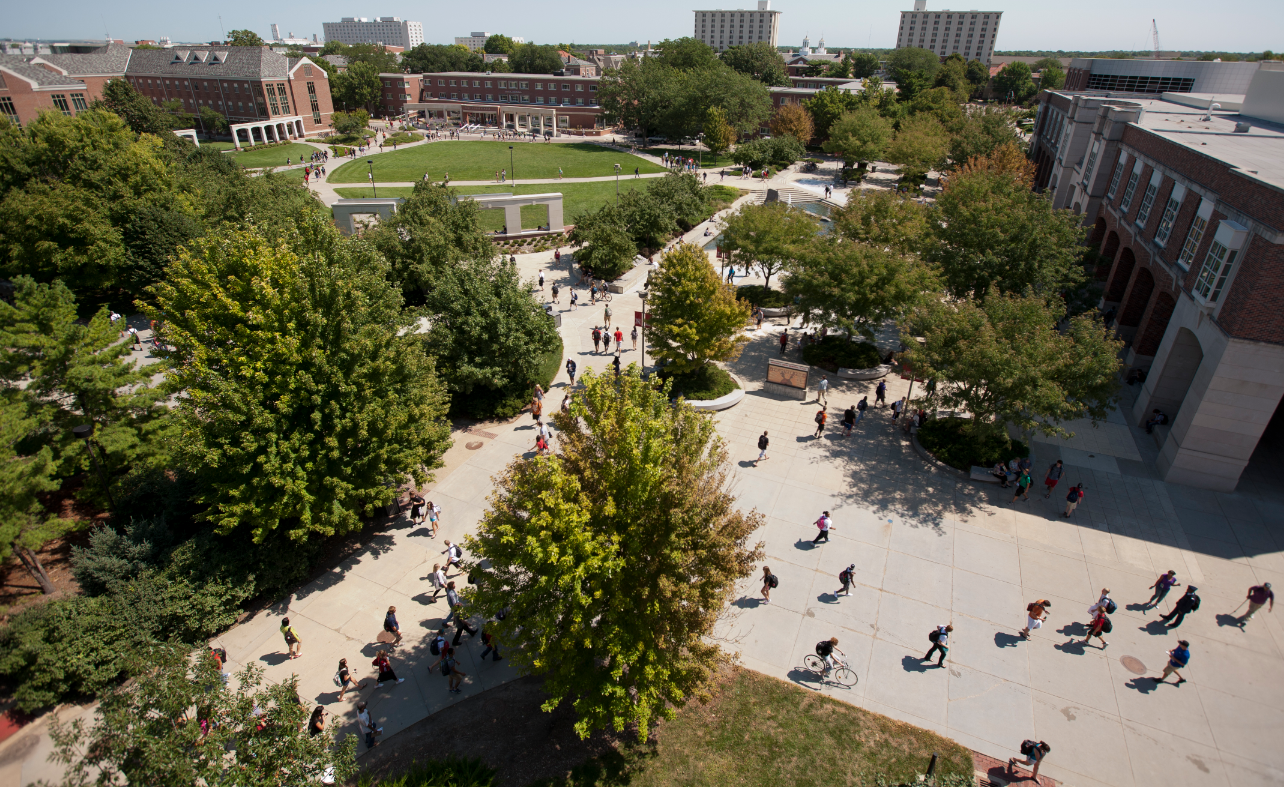
With a 0.4 percent increase in first-time freshmen enrollment and a larger-than-average graduating class for 2010, UNL's total fall 2011 enrollment was virtually unchanged over last year. A total of 24,593 students are attending UNL this fall, marking a 0.1 percent decrease over a year earlier.
UNL graduated a record number of students during the past year (August 2010-May 2011) when 4,935 students obtained their bachelor's degrees, compared with 4,602 the year before. This year's first-time freshmen number 4,093.
Alan Cerveny, dean of admissions, said UNL's increase in graduation and a decrease in the number of students graduating from Midwest high schools contributed to the flat enrollment.
"We thought enrollment would be flat and it was," Cerveny said. "Given the situation — between our large graduating class in 2010 and declines in high school graduates in the Midwest — we feel pretty good about these figures."
Among areas seeing gains at UNL are students in graduate programs — a 1.3 percent increase, and international undergraduate students — up 13 percent over last year. The diversity of first-time freshmen hit its highest mark ever in fall 2011; fully 12.8 percent of first-time freshmen are of minority populations, compared to 10.9 percent in fall 2010.
UNL's average composite ACT for incoming freshmen remained exactly the same as 2010, at 25.3.
Chancellor Harvey Perlman last week in his State of the University address challenged the deans and faculty to focus on recruiting and retaining students, so that by 2017 UNL would have 30,000 students. He also asked campus leaders to improve graduation rates.
Cerveny believes the 30,000-student mark is obtainable. He is especially encouraged by growing interest from high school students in Chicago, Minneapolis/St. Paul, Kansas City and Denver.
"When I came to campus in 2002, people were talking about how difficult it would be to get to 24,000 students by 2011," Cerveny said. "Well, we reached that mark — and we did it a year early.
"If we put the kind of focused attention on increasing enrollment as we have on other initiatives, that 30,000 mark is doable."
The colleges showing the largest increases in enrollment from 2010-2011 are Business Administration (3.7 percent), Agriculture and Natural Resources (3 percent), Education and Human Sciences (2.1 percent), and Engineering (1.7 percent).
Over the past 10 years, UNL's undergraduate enrollment has increased by 6.8 percent; graduate student enrollment has increased by 6.8 percent; and professional program enrollments have increased 16.1 percent. Over the same time period, total enrollment (grad, undergrad and professional) has increased 7 percent.
The enrollment figures were reported Sept. 6 by the University of Nebraska.